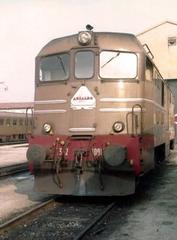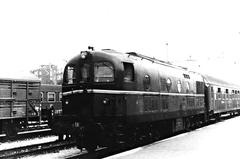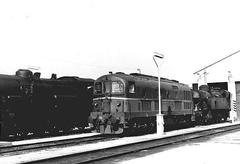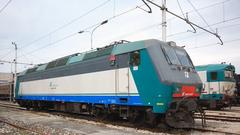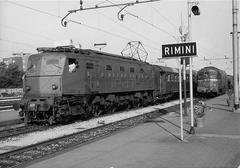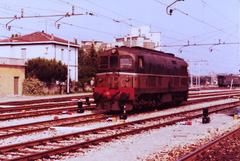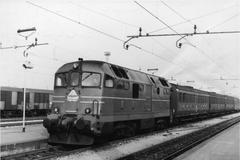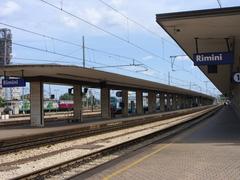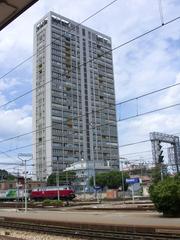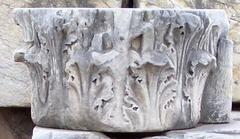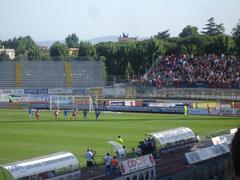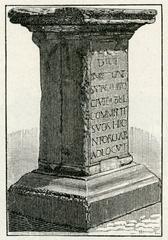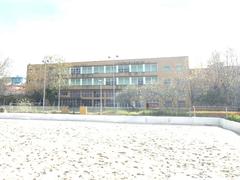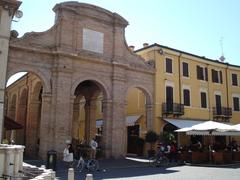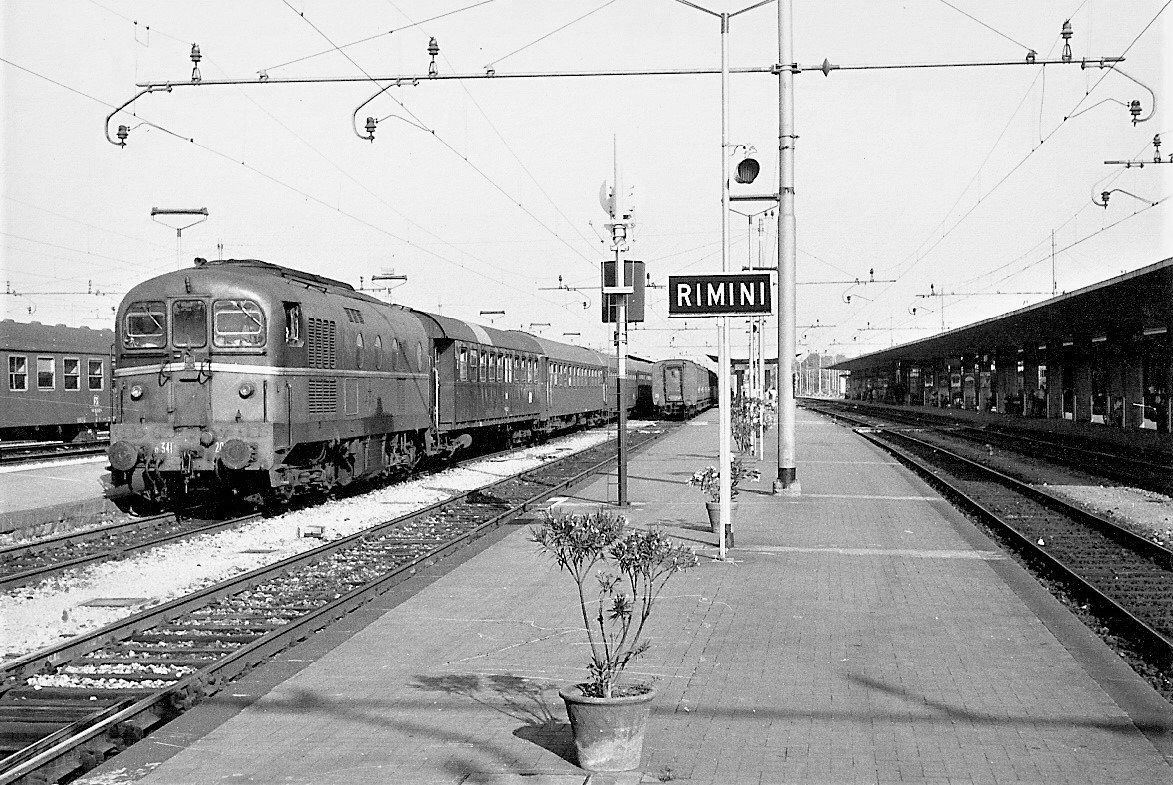
Rimini Railway Station Visiting Hours, Tickets, and Travel Guide
Date: 15/06/2025
Introduction
Rimini Railway Station stands as a distinguished gateway to the historic and vibrant city of Rimini, seamlessly intertwining its rich heritage with modern transit convenience. Since its inauguration in 1861 alongside the pivotal Bologna–Ancona railway, the station has catalyzed Rimini’s transformation into a renowned seaside destination and played a crucial role in Italy’s national integration (Trenitalia). Over time, it has evolved architecturally—melding neoclassical charm with functionalist and modernist upgrades (Full Suitcase).
More than a transport hub, Rimini Railway Station is a cultural and social landmark, connecting travelers to the city’s historic center, iconic beaches, and attractions such as the Arch of Augustus and the Fellini Museum (Visit Rimini). Offering a full spectrum of rail services—from regional lines to high-speed options like Frecciarossa and Italo—Rimini ensures effortless connectivity to major Italian cities (Rimini a-Turist).
With advanced amenities, accessibility features, and sustainable initiatives like the Metromare electric shuttle, the station guarantees a welcoming experience for all visitors (Italy Railway). This guide details Rimini Railway Station’s historical development, architectural significance, transport connections, visitor information, and nearby attractions, offering essential insights for an enriched journey.
Table of Contents
- Historical Development of Rimini Railway Station
- Architectural Significance
- Cultural and Social Importance
- Modernization and Sustainability
- Practical Visitor Information
- Local and Regional Transport Connections
- Nearby Historical Sites and Cultural Experiences
- Frequently Asked Questions (FAQ)
- Safety and Security
- Summary and Final Tips
- References
Historical Development of Rimini Railway Station
Early Years and National Unification
Opened in 1861, Rimini Railway Station was part of the Bologna–Ancona railway, a key infrastructure project during Italy’s unification. The new rail link transformed Rimini from a regional market town into a thriving coastal resort, making it accessible to visitors across Italy and Europe (Trenitalia).
Expansion and Wartime Impact
In the late 19th and early 20th centuries, expansions—including the Rimini–San Marino railway—solidified the station’s regional significance (Travel + Leisure). During World War II, the station and much of Rimini’s rail infrastructure suffered heavy damage from Allied bombings. Postwar reconstruction introduced modernist architectural elements while preserving aspects of the original design (Full Suitcase).
Architectural Significance
Design and Layout
The station’s architecture reflects the evolution of Italian railway design, from its neoclassical origins to modern renovations. The main building features a symmetrical facade, arched windows, and a grand entrance, complemented by functional upgrades like expanded platforms and covered canopies for passenger comfort (Trenitalia).
Urban Integration
Located on Piazzale Cesare Battisti, the station is strategically positioned between Rimini’s historic center and the Adriatic seafront, making it a natural entry point for both cultural exploration and leisure (Travel + Leisure). The station forecourt is a bustling interchange for local buses, taxis, and the Metromare electric shuttle.
Notable Features
- Platform Canopies: Steel-and-glass canopies provide shelter and natural light.
- Historic Facade: Carefully preserved or restored architectural details.
- Modern Amenities: Digital information displays, automated ticket machines, and enhanced lighting.
Cultural and Social Importance
Gateway to Rimini’s Heritage
As a crossroads for both locals and tourists, Rimini Railway Station has welcomed generations seeking the city’s beaches, Roman monuments, and renowned events like the Notte Rosa festival (Visit Rimini). The station’s accessibility underpins Rimini’s status as a leading European resort.
Economic and Social Hub
The station drives tourism and supports the local economy, especially during peak seasons. Its cafes, shops, and waiting areas serve as lively social spaces, reflecting the cosmopolitan character of Rimini (Travel + Leisure).
Modernization and Sustainability
Restoration and Accessibility
Recent decades have seen extensive restoration—upgrading structural integrity, restoring historic facades, and enhancing accessibility with elevators, ramps, and tactile paving for visually impaired travelers (Trenitalia).
Sustainable Mobility
The station is central to Rimini’s sustainable urban mobility initiatives, such as the Metromare electric shuttle and integrated bike-sharing networks, promoting eco-friendly transit and reducing congestion (Travel + Leisure).
Practical Visitor Information
Visiting Hours
- Station Hours: Open daily from 5:00 AM to midnight (Show Me The Journey).
- Ticket Offices: Staffed counters operate from 6:00 AM to 8:00 PM; automated machines are available 24/7.
Ticketing
- Tickets available at staffed counters, self-service machines, and online via Trenitalia, Italo.
- Validation: Regional train tickets must be validated at yellow machines before boarding (Turroo).
- Local Transport Tickets: Purchase at tobacco shops (tabaccherie) or on board.
Facilities
- Multilingual information desks
- Waiting rooms and restrooms
- Left luggage services (seasonal/at tourist info office)
- Cafes, shops, and free Wi-Fi
- Accessibility features: step-free access to Platform 1, elevators, ramps, and tactile paving (Italy Railway)
Local and Regional Transport Connections
Rail Services
- Regional Trains: Frequent services to Bologna, Ancona, Pesaro, Ravenna, and Riccione (Nomads Travel Guide).
- High-Speed Trains: Frecciarossa, Frecciabianca, and Italo connect Rimini to Milan, Venice, Florence, and Rome.
- Intercity and International: Intercity Notte offers overnight routes, and seasonal EuroCity trains link Rimini to Munich (Visit Rimini).
Bus and Urban Transport
- Main hub for Start Romagna SpA bus network (Start Romagna).
- Key Routes: Bus 4 (San Mauro Mare), Bus 11 (Riccione), Bus 9 (Airport), Bus 8 (Italia in Miniatura), Bus 7 (Dolphinarium), Bus 51 (Aquafan in Riccione).
- Metromare Rapid Transit: Connects Rimini and Riccione along the coast, with ongoing expansion plans.
Airport Connections
- Rimini Federico Fellini Airport (RMI): 6 km from city center, accessible by Bus 9.
- Bologna and Ancona Airports: Reachable via rail and shuttle services (Rimini a-Turist).
Taxis and Car Rentals
Available in front of the station, with nearby car hire agencies and parking facilities.
Nearby Historical Sites and Cultural Experiences
- Arch of Augustus: Oldest surviving Roman arch, 1 km from station (History Tools).
- Tiberius Bridge: Roman bridge from 21 AD.
- Tempio Malatestiano: Renaissance cathedral with significant artworks.
- Fellini Museum: Celebrating Rimini’s famous filmmaker (Visit Rimini).
- Italia in Miniatura: Theme park featuring miniature Italian landmarks.
All are accessible by foot, bus, or bike from the station.
Safety and Security
Rimini Railway Station is generally safe, with visible security measures such as CCTV, railway police patrols, and well-lit spaces (Italy Railway). For added safety:
- Stay vigilant, especially during late hours and in crowded areas.
- Secure belongings and use official luggage storage.
- Use official taxis at night.
- Travelers with reduced mobility can request assistance at the information desk.
Frequently Asked Questions (FAQ)
Q: What are Rimini Railway Station’s opening hours?
A: Daily from 5:00 AM to midnight; ticket offices from 6:00 AM to 8:00 PM.
Q: How can I buy tickets?
A: At station counters, self-service machines, or online (Trenitalia, Italo).
Q: Is the station accessible for people with reduced mobility?
A: Yes; Platform 1 is step-free, and assistance is available. Platforms 2–5 are accessible by stairs only.
Q: Which attractions are near the station?
A: The Arch of Augustus, Tiberius Bridge, Tempio Malatestiano, Fellini Museum, and Rimini’s beaches.
Q: Are guided tours or events available?
A: Guided tours of the historic center and occasional cultural events are available via local tourism offices.
Summary and Final Tips
Rimini Railway Station epitomizes the city’s dynamic blend of history, culture, and modern mobility. From its origins during Italy’s unification and subsequent expansions to its present role as a sustainable transit hub, the station is central to Rimini’s identity (Trenitalia; Travel + Leisure). Its location provides convenient access to the city’s most celebrated historical sites (Visit Rimini), while its modern amenities and safety measures ensure a welcoming environment for all travelers.
Tips for Visitors:
- Book train tickets in advance, especially for high-speed and summer travel.
- Use the Metromare shuttle or local buses for easy access to beaches and attractions.
- Download the Audiala app for real-time schedules and travel updates.
- Consult local tourism offices for guided tours and event information.
Rimini Railway Station is not only a point of arrival or departure, but also an integral part of discovering Rimini’s rich heritage and coastal charm.
References
- Trenitalia
- Travel + Leisure
- Full Suitcase
- Rimini a-Turist
- Visit Rimini
- Italy Railway
- Wikipedia
- Show Me The Journey
- Nomads Travel Guide
- History Tools
- Turroo
- InTheRimini
- Start Romagna

